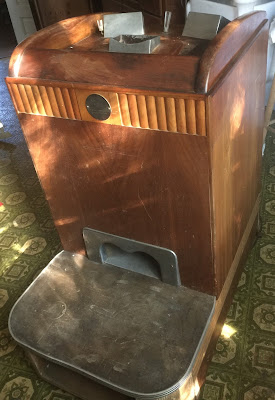 |
| Toxaway Inn in its heyday. |
Last week Picturing the Past looked back at Transylvania
County in 1912, 1927, and 1937. This
week the journey to yesterday’s news by decade continues with events of 1947,
1957, and 1967.
The once luxurious
Toxaway Inn sat empty as Transylvania’s “ghost resort” until being demolished
in 1947. Prior to being torn down all
usable material was sold. Locals,
antique dealers, and scrap dealers purchased items from hand-painted china to
hardwood flooring. Items up for sale
included electrical wiring, plumbing fixtures, bathtubs, windows, furniture,
mirrors, and more.
 |
| The Tinsley Building on West Main was built in the early 1920s. |
The first drive-in bank arrived in Brevard in 1957. Transylvania Trust located on the corner of Main and Caldwell streets purchased the Tinsley Building next door and tore it down in order to offer customers this “modern and convenient” service. In June a merger of Transylvania Trust with banks in Asheville, Hendersonville, and Waynesville created First National Bank and Trust Company.
 |
| Construction of Jones Library at Brevard College. |
In May 1967 Brevard College opened its new James Addison Jones Library. The facility had room for three times the number of books as the old library. It also had seminar rooms, typing rooms, group study rooms and a faculty research area. Jones operated a large Charlotte based construction company. He was a strong supporter of Brevard College and built its first library in 1948.
Photographs
and information for this column are provided by the Rowell Bosse North Carolina
Room, Transylvania County Library. Visit
the NC Room during regular library hours (Monday-Friday) to learn more about
our history and see additional photographs.
For more information, comments or suggestions contact Marcy at marcy.thompson@transylvaniacounty.org
or 828-884-1820.










